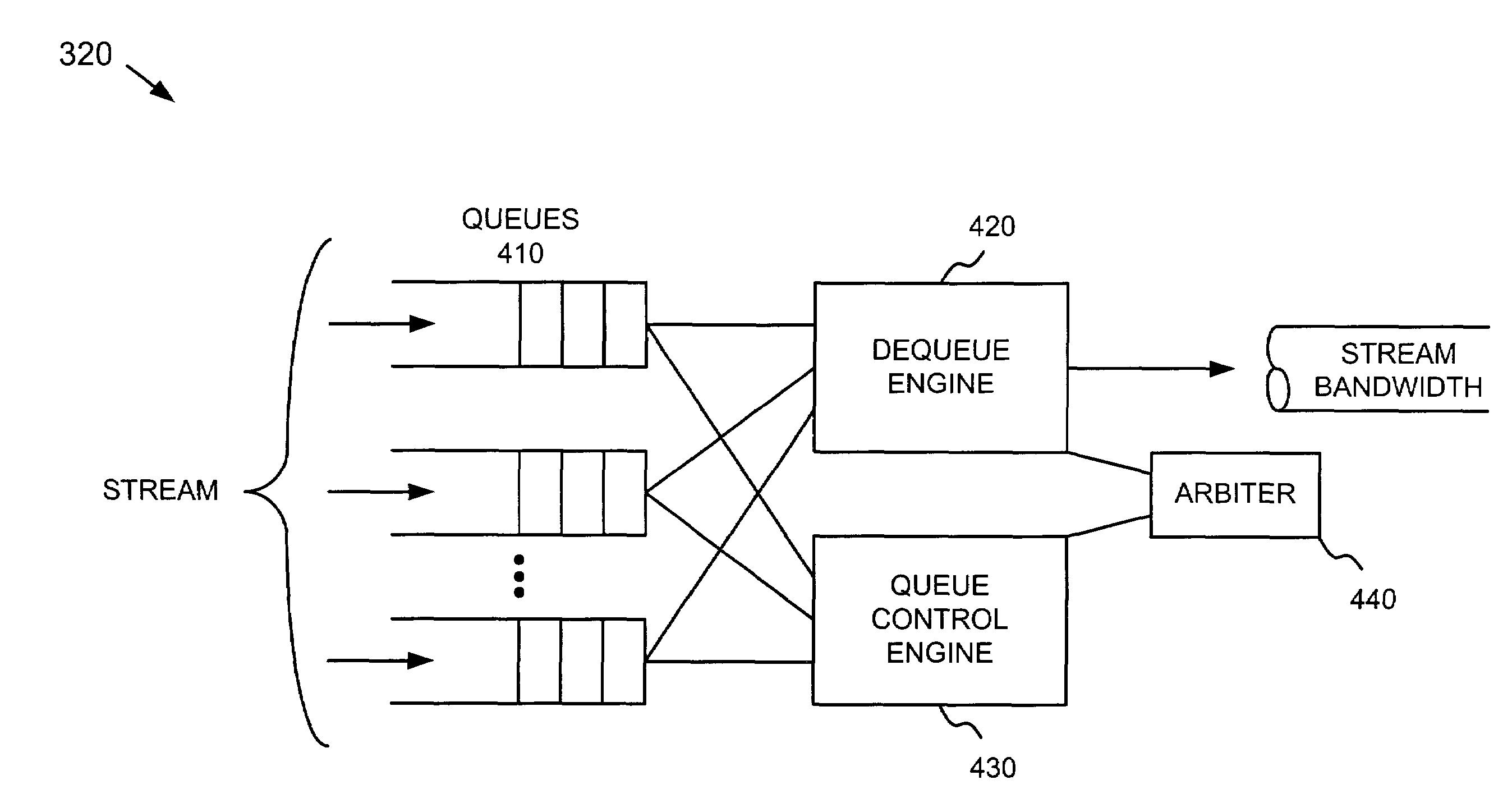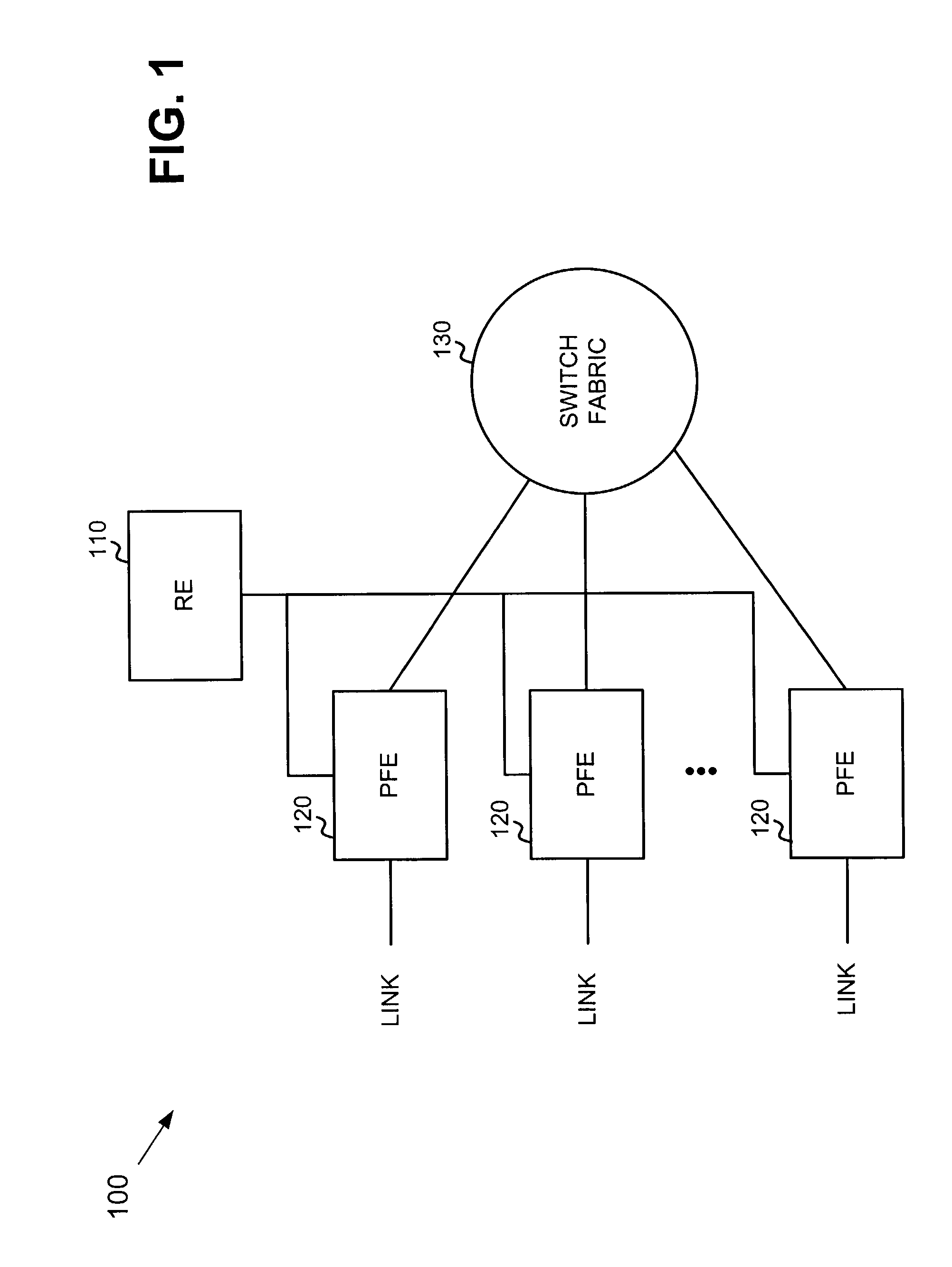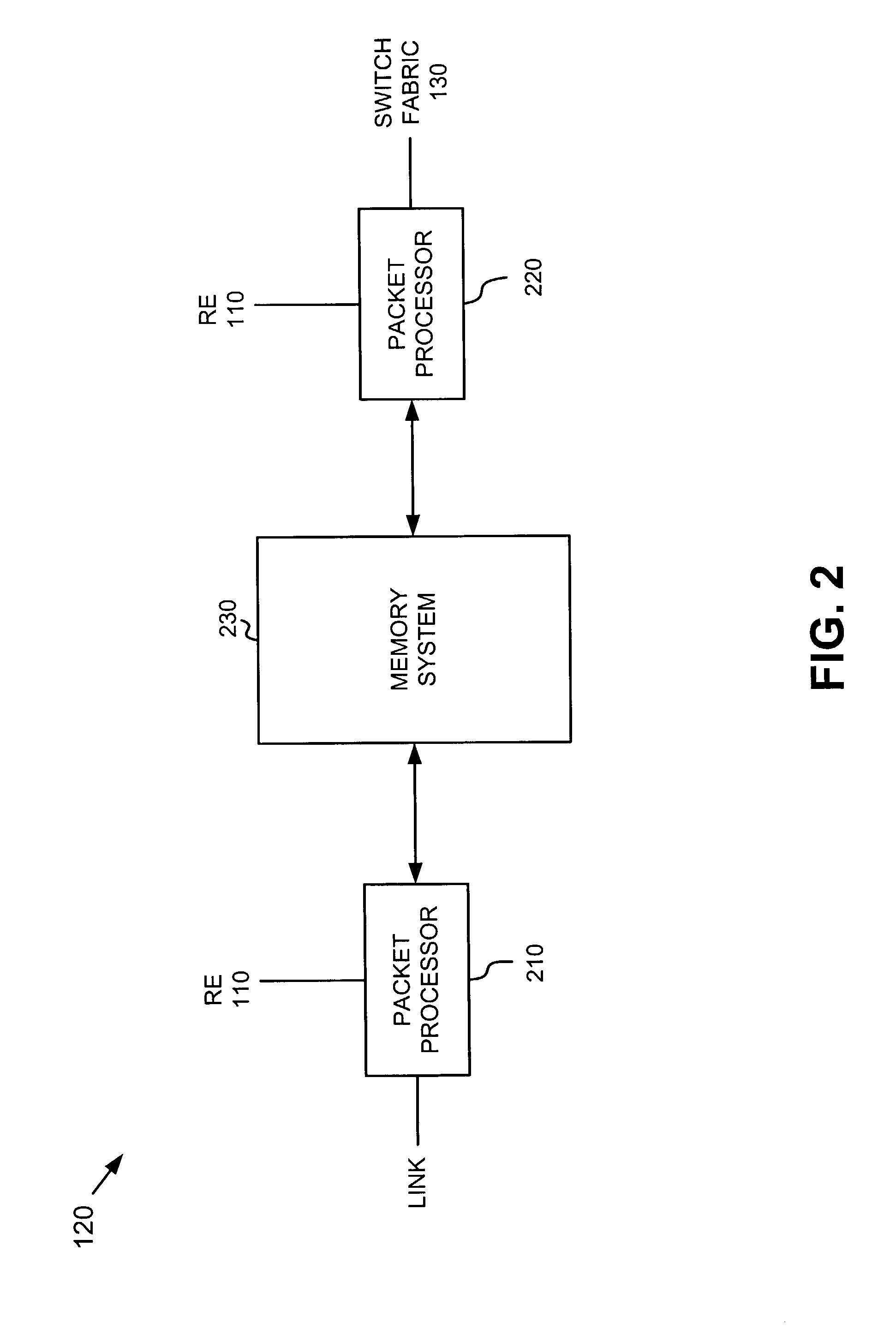Dequeuing and congestion control systems and methods
a congestion control and data transfer technology, applied in data switching networks, frequency-division multiplexes, instruments, etc., can solve problems such as difficult to determine which sources to notify of congestion, data buildup, and conventional congestion avoidance techniques replete with problems, so as to facilitate communication, facilitate communication, and process data efficiently
- Summary
- Abstract
- Description
- Claims
- Application Information
AI Technical Summary
Benefits of technology
Problems solved by technology
Method used
Image
Examples
Embodiment Construction
[0031]The following detailed description of the invention refers to the accompanying drawings. The same reference numbers in different drawings may identify the same or similar elements. Also, the following detailed description does not limit the invention. Instead, the scope of the invention is defined by the appended claims and equivalents of the recited claim limitations.
[0032]Systems and methods consistent with the principles of the invention efficiently drop packets by separating dequeuing and dropping mechanisms to permit these mechanisms to operate in parallel, possibly on the same queue. The systems and methods provide dequeuing and congestion control techniques to efficiently process and buffer packet data.
Exemplary Network Device Configuration
[0033]FIG. 1 is a diagram of an exemplary network device in which systems and methods consistent with the principles of the invention may be implemented. In this particular implementation, the network device takes the form of a router...
PUM
 Login to View More
Login to View More Abstract
Description
Claims
Application Information
 Login to View More
Login to View More - R&D
- Intellectual Property
- Life Sciences
- Materials
- Tech Scout
- Unparalleled Data Quality
- Higher Quality Content
- 60% Fewer Hallucinations
Browse by: Latest US Patents, China's latest patents, Technical Efficacy Thesaurus, Application Domain, Technology Topic, Popular Technical Reports.
© 2025 PatSnap. All rights reserved.Legal|Privacy policy|Modern Slavery Act Transparency Statement|Sitemap|About US| Contact US: help@patsnap.com



